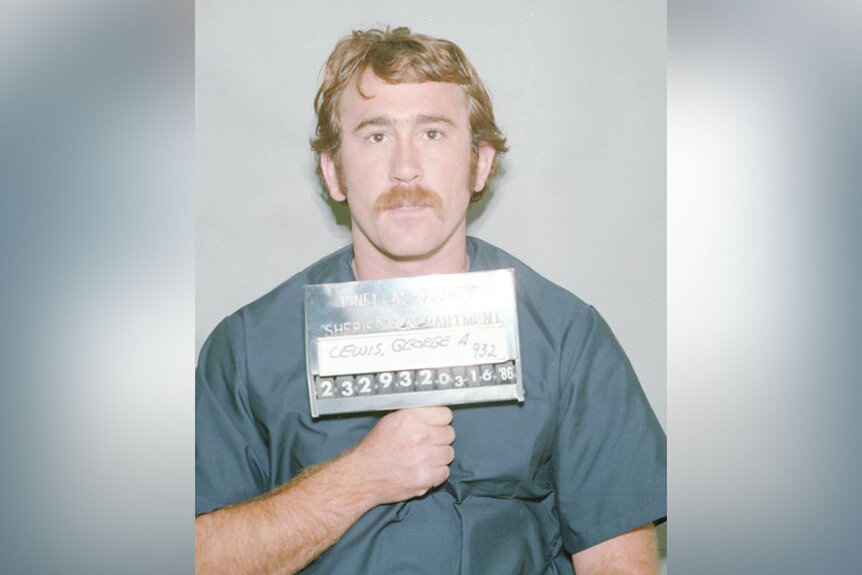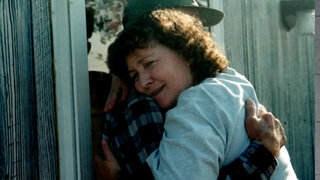Create a free profile to get unlimited access to exclusive videos, breaking news, sweepstakes, and more!
Florida Neighborhood Watch Captain Exposed As Peeping Tom, Murderer, And Rapist
It took two years for Karen Gregory’s killer to be identified thanks to a bloody footprint left at the crime scene.
The murder of a budding artist on May 24, 1984 would take years to be solved — and the case culminated in the arrest of someone the community trusted most.
On the day in question, a woman checking in on her next-door neighbor in a quiet area of Gulfport, Florida saw something she never expected. After knocking on the door, she peeked into the window and saw Karen Gregory, 36, lying on the floor in what looked to be a pool of blood.
She immediately called 911 and authorities rushed to the scene, where they found broken glass suggesting a struggle of some sort. There was blood pooling around Gregory’s head as well as stab wounds around her neck. She was also only partially dressed, leading detectives to immediately suspect she had been sexually assaulted.
It looked like “an attack of rage,” Bill Brinkworth, a detective with the Gulfport Police Department, said in an interview with “An Unexpected Killer,” airing on Fridays at 8/7c on Oxygen.
While surveying the scene, detectives found their first clue: Although there were bloody footprints on the floor, there was no blood on the bottom of Gregory’s bare feet. Those prints were likely made by the killer.
Police interviewed Gregory's neighbor, who was the one to find her body and call police. The neighbor told them that she went to check on Gregory after getting a call from Gregory’s boyfriend, who was in Rhode Island for a conference. He hadn’t heard from Gregory in some time and he wanted to make sure she was OK.
They also interviewed others in the neighborhood, and although many reported having heard screams on the night Gregory was believed to have been killed, no one identified where those screams had come from and had not called the police.
Investigators next spoke to George Lewis, a firefighter and the captain of the neighborhood watch. He told police that he’d been working on his car in his garage that night and, despite the radio playing, had heard a faint scream. He said he'd even gone out into the street to look for anything amiss but hadn’t seen anything. The only strange thing he had spotted, he said, was a man driving up to Gregory's house the night before, walking up to the door, and then walking back to one of the cars outside, where he left a note before leaving.
Authorities knew exactly what he was referring to: During their investigation, they’d found a note on a car signed by someone named Peter, stating that he’d stopped by and hadn’t seen anyone.
It wasn’t long before authorities were able to track down this Peter and bring him in for an interview. Peter Kumble was a friend of Gregory's and had stopped by the house to drop off a tape for her. He agreed to give police his fingerprints and footprints and they allowed him to leave, but they still weren’t convinced of his innocence.
Three days after Gregory was murdered, the results of her autopsy came in: She’d been stabbed dozens of times and her throat was slit. She’d been tortured and raped and was killed a day and a half before anyone had actually found her.
Gregory's boyfriend, David, returned to town from his trip and met with police. He maintained his innocence and voiced his own suspicions about Kumble who, he said, had been trying to get closer to Gregory. But when police talked to Kumble again, he reiterated his alibi, insisting he’d been at home on the night of the murder. Detectives didn't have enough evidence linking either man to the crime in any substantial way.
But five months after Gregory's murder, police got a new clue that changed the trajectory of the case. They heard from someone who lived a few blocks away from Gregory who said that she’d heard the screaming that night and that it had sounded like a long, sustained wailing. This was in direct contradiction with what they’d been told by Lewis, the neighborhood watch captain.
“George is right across the street, and he didn’t hear more than what he said was a faint scream. It didn’t make any sense,” Gulfport PD detective Larry Tosi told producers.
Police brought Lewis in for questioning again, and while he insisted he only heard a faint scream that led him to go outside to look, he then added a new detail, claiming that he’d seen a tall man with red hair standing near a tree in Gregory's front yard. Investigators couldn’t understand why he hadn’t mentioned the man before and Lewis was unable to explain himself.
Still, police investigated the tip and showed Lewis pictures of alleged suspected prowlers in the neighborhood, but he didn’t identify any of them as the man he’d supposedly seen that night.
Investigators continued to talk to the women in the community about the alleged prowler, but what one woman told them broke the case wide open. She described being watched by a man who ran away when she got closer to the window to investigate, and she identified him as none other than Lewis, the neighborhood watch captain.
“It was totally and fully unexpected to us,” Brinkworth told producers.
Police brought Lewis in for questioning yet again. This time, he admitted to hanging around a neighbor’s window, but he claimed that he’d simply been keeping an eye on things and fulfilling his duties as the neighborhood watch captain. He agreed to take a polygraph test, where he was questioned about the peeping accusations and Gregory's murder. He failed.
Lewis changed his story yet again: He said that the man he’d seen that night had actually threatened him and that was why Lewis was nervous and had failed the test. At that point, authorities were unconvinced and collected his footprints and fingerprints.
Their research into his past yielded some surprising information, too. Lewis had allegedly abused his previous wife and had been involved in a swingers club. His friends also spoke to police and said that Lewis had shown sexual interest in Gregory before she’d even moved in with David, and had even made a comment about wanting to have an orgy with her.
Then, the FBI completed its analysis of the bloody footprint left at the crime scene. It was a match to Lewis’ footprint.
When police brought Lewis in for questioning again, he had a new story. This time, he claimed to have gone up to the window. Once he saw her, he went inside to help her and saw that her throat had been cut — but that was a detail only the killer would have known, and police didn’t buy his story.
Instead, they believed Lewis waited until David was out of town to attack Gregory. They arrested him for Lewis' rape and murder. He was found guilty and sentenced to life without parole.
George Lewis died in prison in 2015 at the age of 52, the Tampa Bay Times reported that year.
Those who knew Karen Gregory remember her as someone who had a wonderful sense of humor and a kind heart.
“People just loved her,” her brother Roy Marshall told producers.
For more on this case and others like it, watch "An Unexpected Killer," airing Fridays at 8/7c on Oxygen or stream episodes here.























